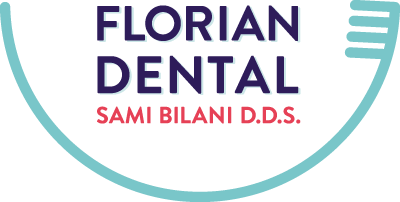Some patients are unable to digest specific carbohydrates because of insufficient amounts of disaccharide enzymes. When those carbohydrates are eaten, the disaccharide is fermented by intestinal bacteria rather than being broken down into simple sugars. This results in malabsorption of the disaccharide, accompanied by diarrhea, abdominal cramps, flatulence, and halitosis. A meta-analysis suggests lactose is not a major cause of the symptoms that many lactose maldigesters attribute to lactose intolerance. Lactase, an intestinal enzyme responsible for lactose digestion, is the only disaccharidase whose activity is reduced in a significant proportion of older children and adults.
Lactose intolerance primarily affects African Americans (75%), Hispanics (50%), Native Americans (100%), and Asians (100%). Lactase deficiency may be an inherited problem with gradual decreases in lactose activity throughout the life span, or a temporary condition caused by gastrointestinal diseases or intestinal mucosa damage. Occasionally, an infant has a lactase deficiency at birth because of an inborn error of metabolism. Lactose intolerance can be diagnosed based on results of a blood, breath, or stool test ordered by a healthcare provider.
Nutritional Care
Treatment of lactase deficiency is simple: reduce lactose-containing foods. Because milk provides significant amounts of calcium, vitamin D, phosphorus, riboflavin, and sometimes protein, elimination is not advisable. The ability to digest lactose is not an all-or-nothing phenomenon; most patients with lactose intolerance can tolerate some lactose. The amount of dairy products is reduced to a patient’s tolerance level. Milk is tolerated better when taken with a meal and limited to 8 oz at a time. Whole milk is tolerated better than skim milk.
Studies indicate an increased frequency of osteoporosis in patients with lactose intolerance because of reduced calcium intake. When adolescent girls restrict dairy products because of perceived milk intolerance, lower spinal bone mineral content results, which may result in osteoporosis. Patients should be taught the approximate calcium composition of the milk products they tolerate so that they can try to consume adequate amounts of calcium.
Fermented dairy products – especially yogurt, buttermilk, aged cheese, and sour cream – are often better tolerated by lactase-deficient individuals. Yogurt made with the organisms Lactobacillus bulgaricus or Streptococcus thermophilus is better tolerated than nonfermented dairy products because it contains active lactase and less lactose. Most commercially available unflavored yogurt can be beneficial to lactose-intolerant patients. Pasteurization of frozen yogurts decreases the lactase activity and kills lactose-producing bacteria, so most frozen yogurts are not well tolerated by lactose-intolerant patients.
Commercially available lactase in tablet or liquid form can be beneficial. Lactase tablets, taken with a lactose-containing food, are effective in the stomach’s acidic environment for approximately 45 minutes. Liquid lactase is effective in a neutral pH, and when added to milk, the lactose is hydrolyzed before ingestion. Specialized lactose-reduced products are also commercially available.
Suggestions for Lactose-Intolerant Patients
- Adequate amounts of calcium need to be provided when milk and milk products are avoided. Because of different tolerance levels, each patient needs to experiment to determine which method is most effective for providing necessary nutrients without discomfort. Consume small amount of lactose-containing foods with meals several times a day.
- Consume fermented dairy products that contain probiotics (live bacteria)
* Yogurt (unflavored yogurt is usually the best tolerated)
* Kefir (kefir is a fermented milk beverage that contains different bacteria than yogurt)
* Buttermilk - Choose aged cheeses (Swiss, Colby, Longhorn) that naturally contain less lactose.
- Try small amounts of whole-milk dairy products.
- Buy lactose-reduces or lactose-free products.
- Read ingredient labels for “hidden” lactose (whey, milk by-products, nonfat dry milk powder, malted milk, buttermilk, and dry milk solids). Also check for lactose in prescription and over-the-counter drugs.
- Drink or eat calcium-fortified foods, such as orange juice, soymilk, and cereals.
- Use over-the-counter lactase enzymes available in tablet/liquid form to hydrolyze the lactose in milk products or lactose-hydrolyzed commercially available milk.
- Increase consumption of other calcium=containing foods, such as salmon and sardines canned with bones, spinach, kale, broccoli, turnip and beet greens, molasses, tofu, almonds, orange, eggs, and shrimp.
- Consider commercially available nutrition supplements, such as
* Ensure (Abbott Nutrition)
*Resource (Novartis/Sandoz Nutrition)
* Sustacal (Mead Johnson Nutritionals) - If the previous suggestions are not feasible to maintain an adequate intake of 800 mg of calcium, consult a healthcare provider or dietitian for calcium supplements that are well absorbed. These supplements may also need to include vitamin D.
